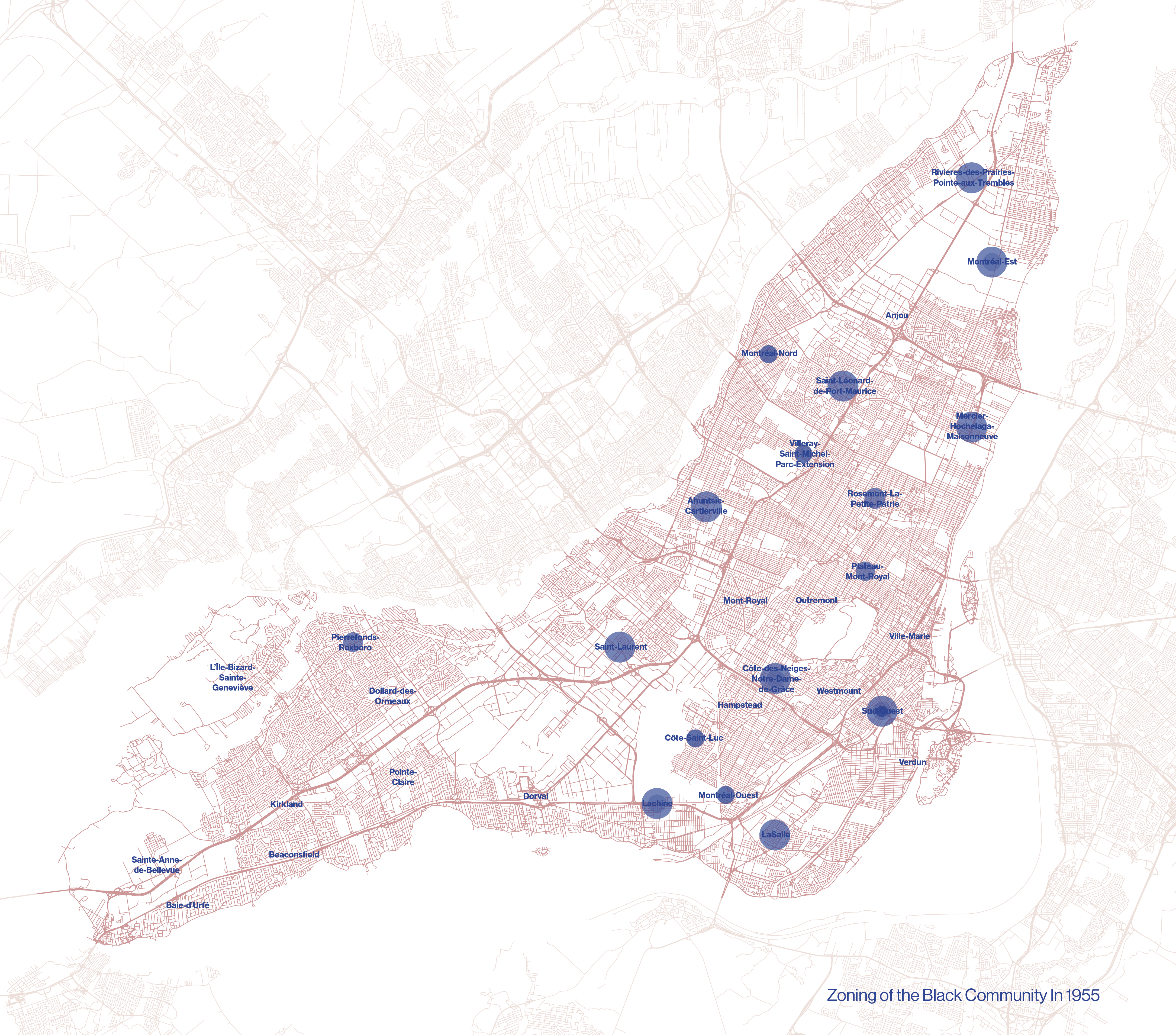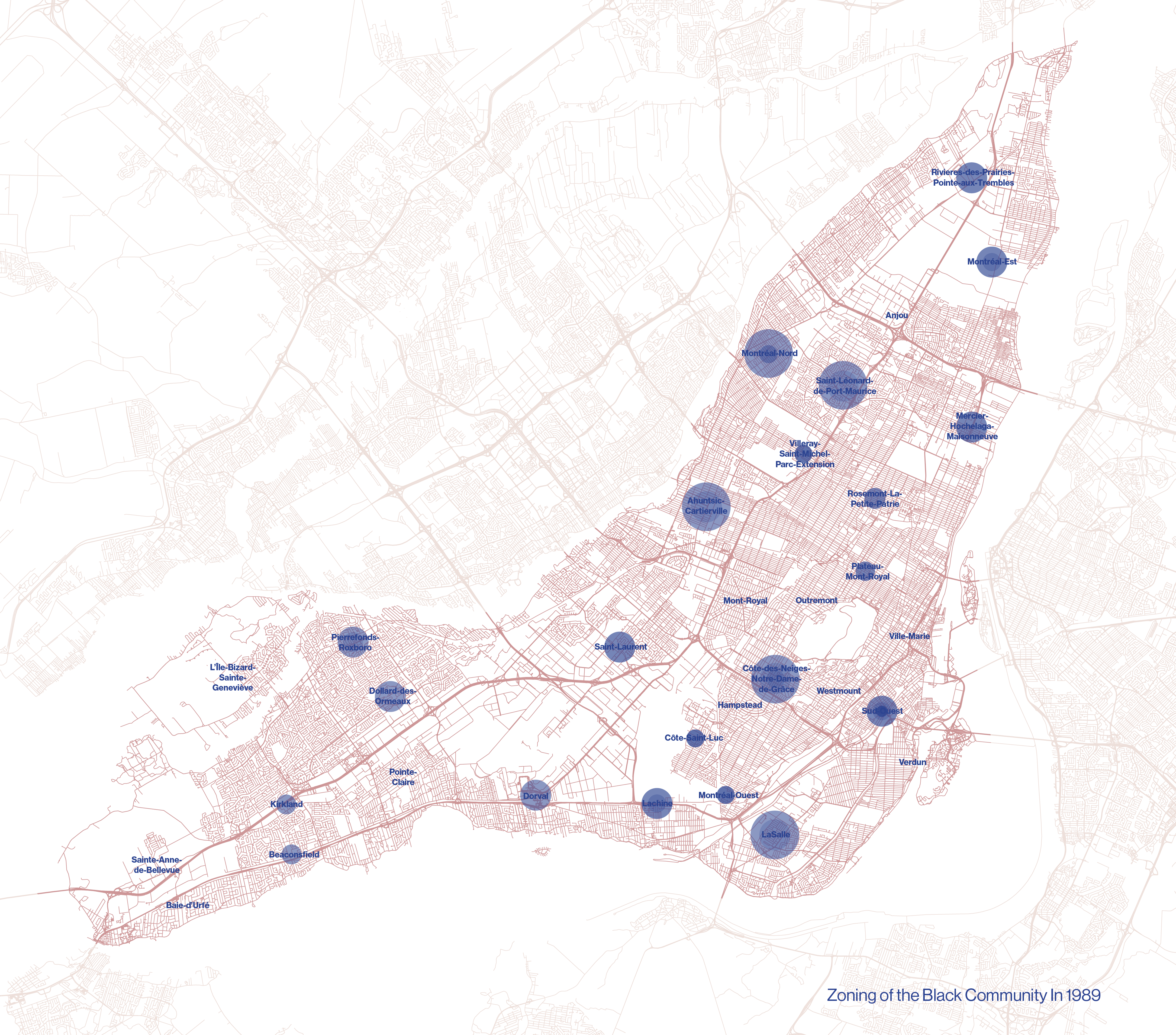Displacement of Montreal’s black community
The first blacks arrived in Montreal due to slavery in the early 1600s, but it took centuries for a true community to form. Discriminatory policies from 1897 to 1930 limited black immigration to Canada, with less than 1% of immigrants being of African descent. The Grand Trunk Pacific railroad linked Toronto to Montreal in 1856, leading to the growth of black settlements in Little Burgundy, known as Saint-Antoine. By 1880, around 1,500 blacks lived on the island, forming a community composed of three distinct origins and cultures: the Americans, the Caribbeans and the Canadians.

The Negro Community Centre (NCC) was founded in 1927 by Charles Este in the Union United Church’s basement, offering vital support to Montreal’s black community on housing, jobs, and immigration. During the 1930s Great Depression, the NCC provided essential aid amidst widespread job loss and housing insecurity.
Simultaneously, black Canadians from Nova Scotia and New Brunswick sought better job prospects. Despite racial discrimination, mobility within the black community emerged, with migration to areas like Maisonneuve, Parc-Extension, Notre-Dame-de-Grâce, and the North End, offering affordable housing. World War II played a pivotal role in reducing black marginalization, enabling black enlistment in the army and women’s transition to office and factory jobs. Union formation and improved working conditions led to enhanced living standards and increased mobility. Black families relocated to Verdun, Ville-Émard, Lachine, Montréal-Est, and the South Shore, with more affluent households settling in Verdun, Ville-Émard, and Côte-Saint-Paul.

By 1955, the NCC moved to the Iverley Centre at 2035 Coursol Street, offering more amenities like a gymnasium and library. An increase in membership coincided with changes in immigration policies, bringing many Caribbean women to Canada via the Domestic Immigration Service. Between 1961 and 1965, 11,835 Caribbeans settled in Canada, peaking at 8% of total immigration in 1969. The black community expanded with social housing initiatives, reaching neighbourhoods like Côte-des-Neiges, Notre-Dame-de-Grâce, Rosemont, Côte-St-Paul, and others. Around 3,539 Haitian professionals also immigrated as political refugees, settling in various Montreal areas, including Montreal North, the West Island, Laval, South Shore, and Plateau Mont-Royal.

In the mid-1970s, Montreal began a large urban revitalization project, leading to a massive wave of expropriation in Saint-Antoine district, renamed Little Burgundy. The city acquired over 75% of the area, displacing thousands of residents, notably Black individuals, who resettled in other areas, such as Notre-Dame-de-Grâce, Ville LaSalle and Côte-des-Neiges neighbourhood, causing a decline in Little Burgundy's black community. The NCC's closure in 1989 followed reduced demand for its services.
Starting in 1968, a second wave of Haitian immigration made them the largest group in Montreal's black community, alongside Caribbean immigrants and a new African community. Despite rising immigration, Little Burgundy saw few newcomers. Black communities sought better opportunities, prompting relocations to LaSalle, the West Island, and the South Shore.

Unfortunately, in 2014, the site and building were sold to a real estate developer as the NCC faced bankruptcy, and the building’s condition continued to deteriorate.
Despite imperfections, conditions for the black community in Montreal saw improvement in the early 21st century. With ongoing immigration, the arrival of new generations, and increased mobility, the black community is now dispersed across all boroughs of the city. Neighborhoods with the highest percentage of black residents include Ahuntsic-Cartierville, Côte-des-Neiges-Notre-Dame-de-Grâce, LaSalle, Montréal-Nord, Pierrefonds-Roxboro, Rivières-des-Prairies-Pointe-aux-Trembles, Villeray-Saint-Michel-Parc-Extension, and Montréal-Ouest.

The year 2023 brings renewed hope for Montreal’s black community as the city acquires the lot where the former NCC building once stood. The plan is to create a project that combines social housing with a community center, designed to embody the essence of the community.
Both growing immigration and a natural increase in population have contributed to the city’s transformation. In a society marked by globalization and improving employment and education prospects, the mobility of black individuals continues to rise. Since 2014, the percentage of black residents has increased in almost every borough.
In addition to the areas previously mentioned, Anjou, Lachine, Mercier-Hochelaga-Maisonneuve, Saint-Léonard, and Montréal-Est now have black residents accounting for at least 10% of their total population.
Both growing immigration and a natural increase in population have contributed to the city’s transformation. In a society marked by globalization and improving employment and education prospects, the mobility of black individuals continues to rise. Since 2014, the percentage of black residents has increased in almost every borough.
In addition to the areas previously mentioned, Anjou, Lachine, Mercier-Hochelaga-Maisonneuve, Saint-Léonard, and Montréal-Est now have black residents accounting for at least 10% of their total population.
